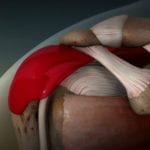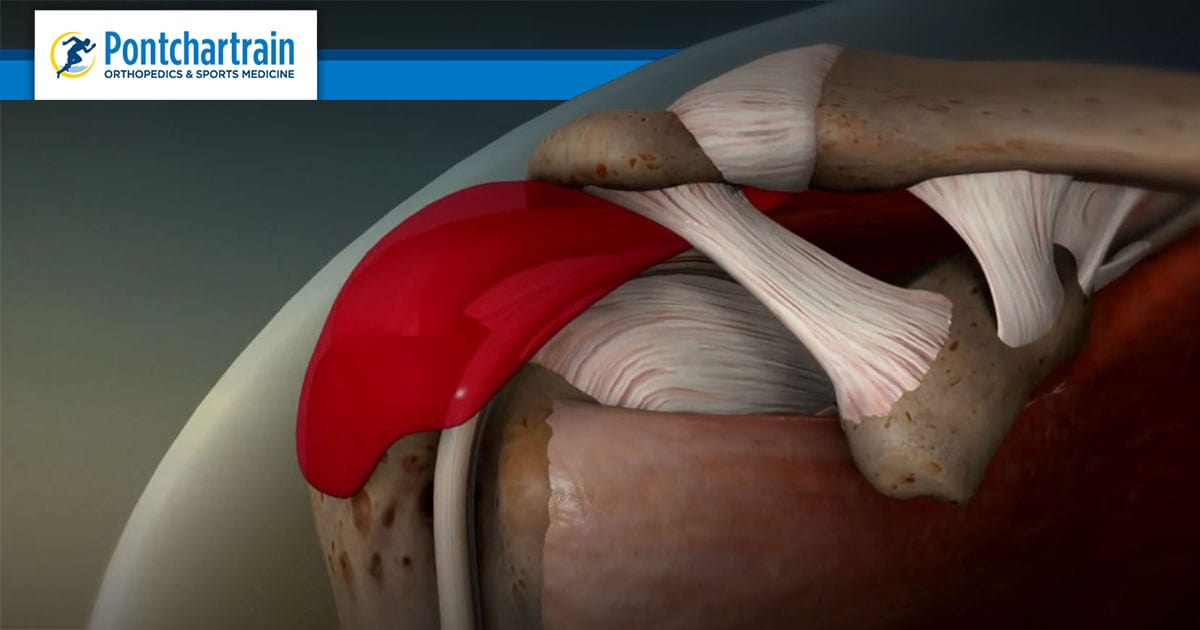Bursitis
Bursitis is the inflammation or irritation of the bursa - the fluid-filled pads (bursae) that act as cushions at the joints. The bursa is present in many of the joints in the human body, prevents damage to the joints by reducing friction from movement. When protecting your joints, a bursa can become inflamed from overuse. The condition is most common in the elbows, hips, knees, and shoulders, but can occur in other joints, such as the wrists, ankles, upper back, and the big toes. Any joint that performs repetitive movements is susceptible to an inflamed bursa.
Symptoms of Bursitis
 The primary symptom is pain and swelling in the joint. At first, the pain may begin as an intense, sharp pain, but as the inflammation progresses, may become a deep, aching pain. Patients may experience more pain after putting stress on the affected joint. Other symptoms include warmth or redness around the joint, fever, stiffness, and a limited range of motion.
The primary symptom is pain and swelling in the joint. At first, the pain may begin as an intense, sharp pain, but as the inflammation progresses, may become a deep, aching pain. Patients may experience more pain after putting stress on the affected joint. Other symptoms include warmth or redness around the joint, fever, stiffness, and a limited range of motion.
Potential causes of bursitis include overuse, prolonged stress or pressure on the joint, trauma, or infection.
Bursitis of the Knee
How to Prevent Bursitis
If you suspect that you have bursitis, a specialist at Pontchartrain Orthopedic & Sports Medicine will ask you questions about your pain and perform a physical examination. More advanced forms of diagnosis may be used, such as joint aspiration, Magnetic Resonance Imaging (MRI), ultrasound, or X-ray. These diagnostic procedures may also be used to monitor the progression of the inflammation or to help determine a suitable form of treatment.
Bursitis of the Shoulder
Diagnosing Bursitis
Steps can be taken to prevent the condition before it begins. When exercising, remember to start slowly, limit increases in speed, and take care not to overwork your joints. Warming-up before exercise, in addition to warming-down, can help reduce the risk of joint damage. Wearing shoes with supportive padding and custom-fitted braces and compression gear can also help prevent some types of bursitis.
Treatment of Bursitis
Once diagnosed with bursitis, our specialist will discuss a variety of treatment options. Oral medication, physical therapy, corticosteroid injections and regenerative therapies can all reduce inflammation in the bursa, relieve joint pain and simulate healing. Depending on the severity of the bursa inflammation, the doctor may require you to temporarily wear a supportive device to help relieve stress on the affected joint. In rare cases, surgery may be required. If you believe you may have bursitis, the specialists at Pontchartrain Orthopedics and Sports Medicine can help. Schedule your appointment today.

